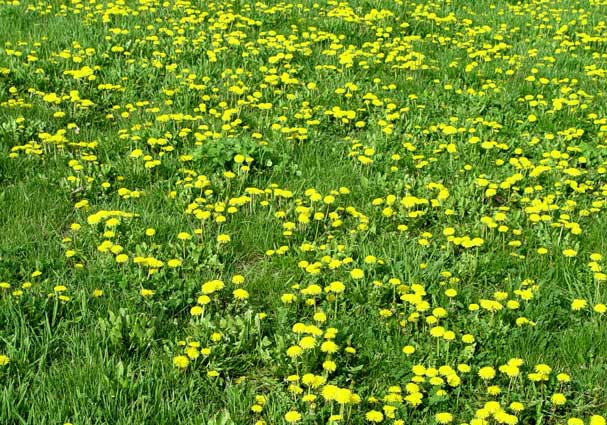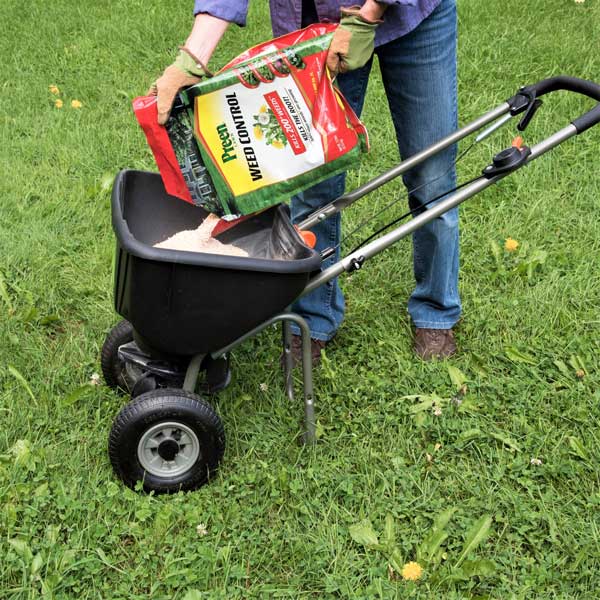Why Crabgrass Can Be Worse the Year After a Wet Season
Last year's rainy summer means more crabgrass seeds will sprout this year, unless you stop it in its tracks this spring.

If you see yellow in the lawn from dandelions, and don't need to fertilize - reach for Preen Lawn Weed Control.
The same conditions that make spring such a good growing month for plants also make it prime time for weeds in the lawn. Early spring’s warming soil and usually damp conditions are perfect for the sprouting of new lawn weeds, especially some of the most troublesome, such as lambsquarters, pigweed, galinsoga, and dandelion.
These join new “winter annuals” that already sprouted in colder weather (hairy bittercress, henbit, purple deadnettle, and speedwell, for example) and perennial ones that are regrowing from their roots, such as plantain, ground ivy, Canada thistle, and wild geranium. The result is a buffet of weeds that can quickly overtake a lawn. The problem multiplies if weeds are allowed to flower and seed. Bigger, isolated weeds can be dug or pulled, but for creepers, spreaders, and weeds throughout the lawn, herbicides are available that kill broadleaf weeds without harming lawn grass.

Apply granular Preen Lawn Weed Control using a drop or rotary spreader anytime weeds are growing.
Preen Lawn Weed Control is a granular product that contains three different weed-killers. Apply it over the lawn (not in garden beds with existing plants), and it kills more than 200 broad-leaf lawn weeds. Unlike “weed-and-feed” products, Preen Lawn Weed Control doesn’t contain fertilizer. Its only mission is to kill broadleaf weeds. Therefore, it can be applied any time broadleaf weeds are actively growing without risk of burning grass with excess fertilizer. Preen Lawn Weed Control also is targeted to broadleaf weeds and not grassy weeds, such as crabgrass, goosegrass, and dallisgrass (See Use Directions for complete list of weeds).
For best results, apply Preen Lawn Weed Control after a rain or first thing in the morning when dew is on the grass. That helps the granules stick to the grass blades, increasing the product’s effectiveness. Time the application when rain is not in the forecast at least 48 hours, and be sure not to water it in or irrigate the lawn once applied as this will wash the granules from the weed leaves. Be patient – as granular lawn weed killer does not have an immediate effect. Within two weeks, the lawn weeds should begin wilting and dying. Preen Lawn Weed Control can be used on all lawns except carpetgrass, dichondra, St. Augustinegrass, or established turf containing desirable clovers.
One other good strategy to head off future lawn-weed outbreaks is to thicken the lawn. Additional grass seed fills in the small gaps before weeds of any kind have a chance to colonize.
Early fall is the year’s best time to seed or overseed a lawn, but grass also can be planted throughout summer if it’s kept consistently damp. Just be sure to wait three weeks after an application of Preen Lawn Weed Control before reseeding or overseeding the lawn to thicken it.